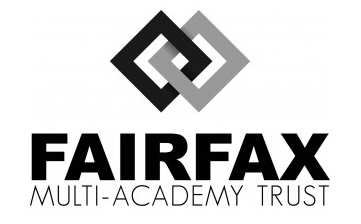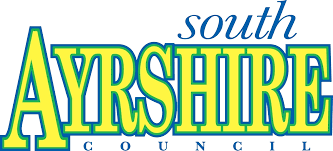
Words are power
Almost all the vocabulary learners understand and use when they start school will have been learnt in the home. It’s very important that children learn new vocabulary “by observing how the words are used in intelligible contexts”. (p96) One of the best ways to expand their vocabulary is, of course, by reading. We’ve mentioned before how dictionaries, somewhat counterintuitively, are not the best tool to use:
“Dictionaries are too slow. Recourse to a dictionary may help a mature and well-motivated student but for the average child…it is likely to compound interruption with misunderstood information." How Children Learn Words, George A Miller & Patricia M Gildea.
What's most important is that we learn to determine the meaning of words through the context in which they are used (we'll discuss this in more detail when we look at the Tricky Words and Word Web mini-skills).
In our Word Check mega-skill, Tricky Words helps to break the habit of skipping over unknown words. Word Web helps learners to expand their vocabulary by thinking about associations between words with similar meaning. Word Pairs looks at how words may or may not be linked. Read on to find out how our Word Pairs mini-skill works.
What are Word Pairs?
Word Pairs aims to teach learners how to think about how certain words are related. It’s really simple, and you can easily emulate it in the classroom.
Words unfamiliar to a learner begin to acquire meaning via the context in which they are read. In George Mille and Patricia M. Gildea's How Children Learn Words, they write that “Many words are acquired through reading. Children learn words…by observing how words are used in intelligible contexts.” P96. It’s one of the many reasons why it's important we encourage our learners to read more.
Learners are offered two words, and have to decide whether the meaning of the words are:
- The same (i.e. happy and cheerful)
- Opposite (i.e. up and down)
- Go together (i.e. apples and pears)
- Have no relation (i.e. chalk and cheese).
It’s not just about antonyms or synonyms, but about thematic links or associations too. 'Apples' and 'pears' may have different meanings, but they are both types of fruit – we put them together. And for some words, it may seem like they’re linked, but they're not – read on for a good example of this!
Word Pairs in The Red Stone of Calcutta
In this example, taken from our Comprehension programme The Red Stone of Calcutta, learners undertake this task after reading a chapter of the story. The words chosen are potentially tricky words taken directly from the chapter.
In the first question, ‘peak’ and ‘summit’ are synomyms. Learners should select the 'same' button.
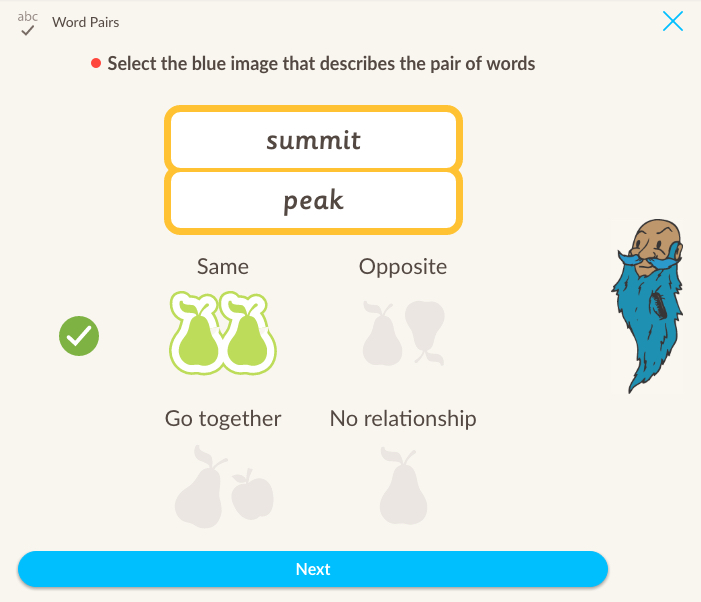
In the second question, ‘monastery’ and ‘church’ are not exact synoymns, but they are associated with one other- they are linked thematically. Therefore the learner should select 'go together'.
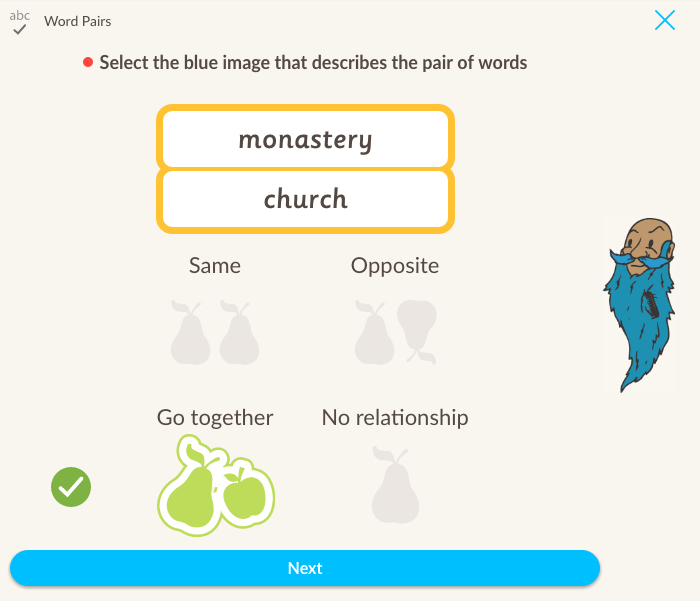
In the third question, ‘worrier’ and ‘warrior’ look and wound very similar, but are neither synomyms, antonym or associated! The learner here should choose 'no relation'.
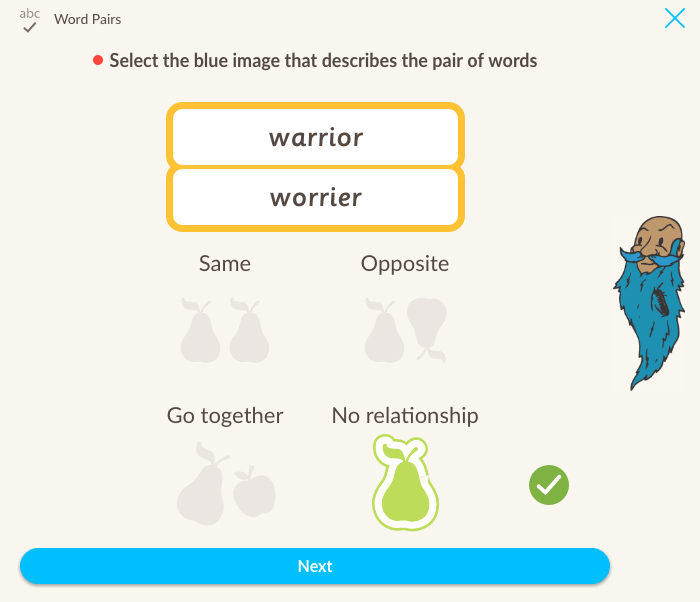
So there you have it. The Web Pair mini-skill is a very simple but extremely effective way of helping learners to build vocabularly, whilst introducing them to the notion of synonyms, antonyms and the way certain words can be groups together by themes or association.
What do you think?
We'd love to hear your thoughts about Word Pairs as a comprehension strategy, and ways that you've integrated this practice into your classroom. Have you seen anything special?
The ReadingWise Demo
Short, friendly and informative - you might like to arrange a demo with our team at a time to suit you.So far we've reached many thousands of learners and would love to explore working with you if it might help more children read.




